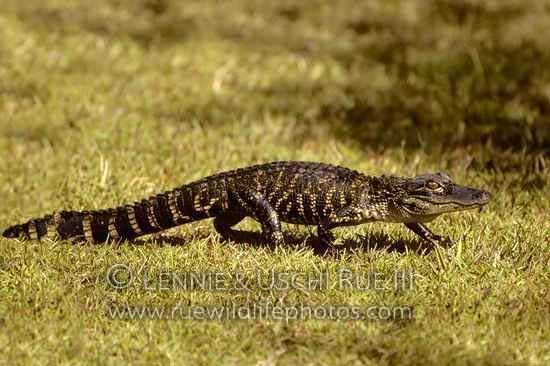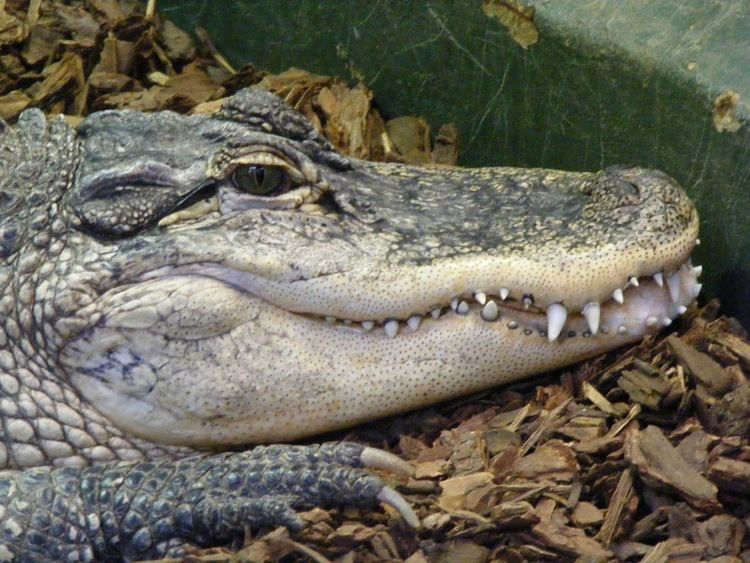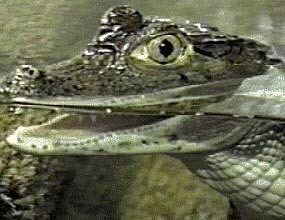Scientific name Alligatoridae | Phylum Chordata Higher classification Crocodiles | |
 | ||
Family AlligatoridaeGray, 1844 Clutch size American alligator: 20 – 50 Lower classifications | ||
Baby american alligator crocodilian reptile gator reptiles alligators alligatoridae
The family Alligatoridae of crocodylians includes alligators and caimans.
Contents
- Baby american alligator crocodilian reptile gator reptiles alligators alligatoridae
- True alligators
- Caimans
- Differences from crocodiles
- Taxonomy
- References
True alligators

The lineage including alligators proper (Alligatorinae) occurs in the fluvial deposits of the age of the Upper Chalk in Europe, where they did not die out until the Pliocene age. The true alligators are today represented by two species, A. mississippiensis in the southeastern United States, which can grow to 15 ft (4.6 m) and weigh 1000 lbs (453 kg) and the small A. sinensis in the Yangtze River, China, which grows to an average of 5 ft (1.5 m). Their name derives from the Spanish el lagarto, which means "the lizard".
Caimans

In Central and South America, the alligator family is represented by six species of the subfamily Caimaninae, which differ from the alligator by the absence of a bony septum between the nostrils, and having ventral armour composed of overlapping bony scutes, each of which is formed of two parts united by a suture. Besides the three species in Caiman, there are the smooth-fronted caimans in genus Paleosuchus and the black caiman in Melanosuchus. Caimans tend to be more agile and crocodile-like in their movements, and have longer, sharper teeth than alligators.

C. crocodilus, the spectacled caiman, has the widest distribution, from southern Mexico to the northern half of Argentina, and grows to a modest size of about 2.2 metres (7 ft 3 in). The largest is the near-threatened Melanosuchus niger, the jacare-assu or large or black caiman of the Amazon River basin. Black caimans grow to 16.5 feet (5.0 m), with the largest recorded size 5.79 metres (19.0 ft). The black caiman and American alligator are the only members of the alligator family that pose the same danger to humans as the larger species of the crocodile family.
Although caimans have not been studied in depth, scientists have learned their mating cycles (previously thought to be spontaneous or year-round) are linked to the rainfall cycles and the river levels, which increases chances of survival for their offspring.
Differences from crocodiles
Alligators differ from crocodiles principally in having wider and shorter heads, with more obtuse snouts; in having the fourth, enlarged tooth of the under jaw received, not into an external notch, but into a pit formed for it within the upper one; in lacking a jagged fringe which appears on the hind legs and feet of the crocodile; in having the toes of the hind feet webbed not more than half way to the tips; and an intolerance to salinity, alligators strongly preferring fresh water, while crocodiles can tolerate salt water due to specialized glands for filtering out salt. In general, crocodiles tend to be more dangerous to humans than alligators. Another recently discovered trait is that of both caimans and American alligators partaking of foliage and fruit in addition to their normal diet of fish and meat.
Taxonomy

